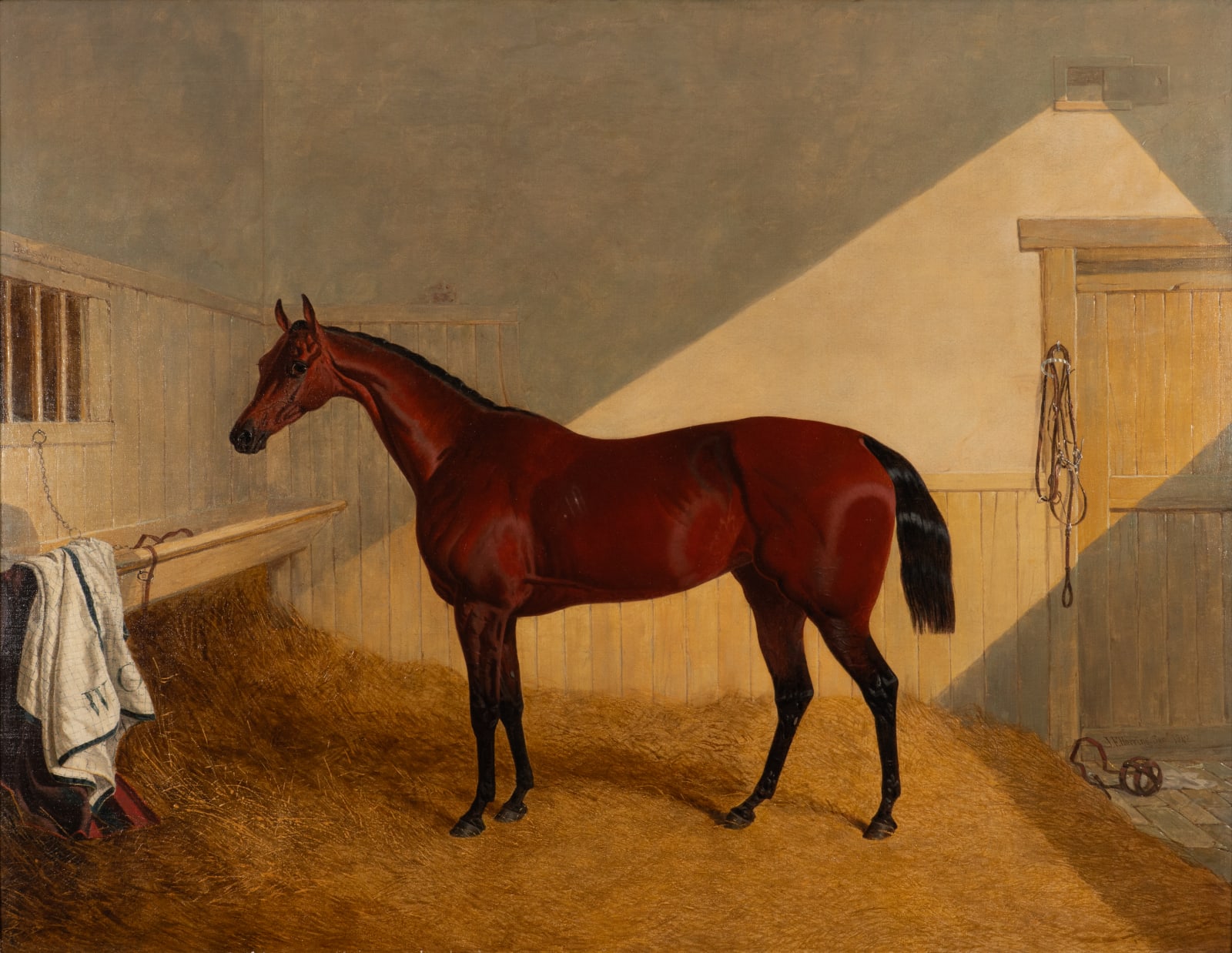John Frederick Herring Snr British, 1795-1865
Provenance
Richard Green
Private collection
Foaled in 1833, ‘Beeswing’ was one of 19th-century Britain’s most celebrated racehorses, revered for her durability, spirit, and success on the turf. Bred by William Orde of Northumberland, she was small and delicate, barely over 15 hands, but made up for it with tremendous heart and stamina. Her sire, ‘Dr. Syntax’, was a northern racing legend known for his longevity and toughness, traits that ‘Beeswing’ inherited.
Despite being poorly nourished as a foal, ‘Beeswing’ developed into a dominant force on the racetrack. Her debut as a two-year-old was modest, but she quickly found her stride, accumulating 51 wins in 63 starts over eight racing seasons—a feat virtually unmatched in British racing history. She won the Newcastle Cup six times, the Craven Stakes and Fitzwilliam Stakes three times each, and the Doncaster Cup four times. At age nine, she achieved her crowning triumph, winning the Ascot Gold Cup in thrilling fashion and closing her career with a commanding six-length victory in the Doncaster Cup.
Public adoration for ‘Beeswing’ was immense. Entire towns turned out to celebrate her return from victories, and a local pub in Morpeth was named in her honour. Her racing legacy was one of consistency, courage, and versatility, competing successfully against the best horses of her era—including ‘Touchstone’, who would later become her mate.
‘Beeswing’’s second career as a broodmare was equally illustrious. Mated primarily with ‘Touchstone’, she produced eight foals, six of which survived, and four of those became major winners. Notable among them were:
• ‘Nunnykirk’ (1846), winner of the 2,000 Guineas and second in the St. Leger.
• ‘Newminster’ (1848), winner of the St. Leger and later twice leading sire in Britain.
• ‘Honey-dew’, winner of the North Derby at Newcastle.
• ‘Honeysuckle’, who captured the Park Hill Stakes and became the anchor of a hugely influential female bloodline.
Through Honeysuckle’s daughter Woodbine, Beeswing’s lineage spread across the globe. Three daughters of Woodbine established branches of the family that led to champions such Derby winner ‘Melton’, American stars ‘Ruffian’ and ‘Storm Cat’, and international legends including ‘Sir Ivor’ and ‘Nearco’.
‘Beeswing’ died in 1854 at age 21. In a final tribute to her extraordinary life, some of her bones were placed at the feet of ‘Touchstone’’s skeleton after his death, symbolically reuniting the queen of the turf with her royal consort.
Today, ‘Beeswing’’s influence is still visible in modern pedigrees, a testament to her enduring impact both on the racecourse and in the breeding shed. From a lightly regarded filly with a modest start, she rose to become one of the great matriarchs of the Thoroughbred breed—an icon of resilience, class, and legacy.
This work, painted in 1842 – the year ‘Beeswing’ won the Newcastle Gold Cup, the Doncaster Cup and the Gold Cup at Ascot – shows her in her stable with her name written on the stall panelling, and the initials of her owner (William Orde), visible on the horse-blanket.
